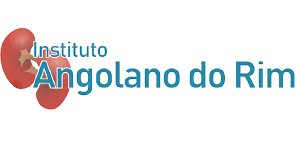Annual Activity Report – 2020
Done by
Dr. Gilsemar Boavida
Dr. João Bispo
Enfª Laurinda Chipepe
Clinical Secretary : Ndjinga João

Abstract
The mission of the Instituto Angolano do Rim is to provide hemodialysis treatment with the objective of respecting the legislation applicable to the hemodialysis sector and the assumed commitments; creating a good working environment; and promoting the offer of services in accordance with the identified needs, resource availability, motivation, employee involvement and continuous improvement of the health system to achieve success.
It has 2 Hemodialysis Clinics located at General Hospital of Lobito and at Municipal Hospital of Benguela.

Lobito Hemodialysis Clinic has 82 employees and a daily capacity to attend 126 Chronic Kidney Disease Patients on dialysis, operating in 3 shifts per day, for a total of 2,160 dialysis sessions per month.
During 2020, we provided assistance to an average of 137 patients per month. 43% were women and 57% were men. The predominant age group was 40-49 years old. 77% had negative serology, 6.3% positive serology for HIV, 13.6 % for Hepatitis B and 3.4% for Hepatitis C.
During this period, we recorded an average of 1,343 dialysis sessions per month, despite the numerous difficulties we had faced regarding the regular supply of medical consumables. Regarding vascular access, 38.8% was done with Long-term Catheters, 26.7 % with Short-term Catheters and 34.5% with arteriovenous fistula. Despite this satisfactory outcome, it is necessary to establish a program aimed at providing arteriovenous fistula with the existent vascular surgeons.
As for KTV, we recorded an average of 67.8% of patients with a level equal to or greater than 1.2. Even though we have not achieved the international recommended goal (70%), we consider this result to be acceptable, considering the patient’s profile and the numerous difficulties that we have faced in this period. There are a number of clinical and laboratory variables associated to a better-quality treatment (KTV, HEMOGLOBIN, PHOSPHORUS, CALCIUM, ALBUMIN, PTH) that must be monitored and controlled through a regular functioning of the Laboratory, supply of medications and control of comorbidities.






During 2020, we noticed that the hemoglobin level of patients on chronic dialysis regimen was below the recommended for chronic kidney disease patients (11-12 mg/dl of hemoglobin). 85% had the hemoglobin level below 10mg/dl, which was directly proportional to the high number of transfusions and hospitalizations.
Opportunity for Improvement: continue to charge the regular supply and in the correct doses of these medications that are extremely important for patients enrolled in renal dialysis treatments. Effective control of erythropoiesis-stimulants stock. Control of prescriptions and administration of doses by a medical manager through a monthly plan based on the results of the analyses made every month, which will be available for consultation to all team members.
The mortality rate was on average 1.74%, which is in line with international guidelines that advocate a rate of 2% per unit. Although there are multiple factors that contribute to the death of chronic kidney disease patients on dialysis – such as infections, malnutrition, lack of medication, multiple transfusions, severe anemia, comorbidities without regular follow-up and social issues – we recorded satisfactory values.

Opportunity for Improvement: ensure with DPS the regular and correct supply of erythropoiesis stimulants, which is extremely important for these renal disease patients in dialysis.
Opportunity for improvement: create conditions to minimize and control factors that directly and indirectly affect the quality of dialysis, and consequently the mortality of patients, ensuring a regular provision of medical supplies, medications, controlled and acceptable PTH levels, Phosphorus, Calcium, Hemoglobin, Vitamin D, Iron, Ferritin.
Final Note: we need to improve our service provision with the objective of offering a quality dialysis in accordance with the international standards and the guidelines of the Angolan Ministry of Health, resizing Human Resources, improving the set of medical devices and the laboratory’s capacity, and creating a mechanism to ensure a regular supply of medical supplies and medications.
